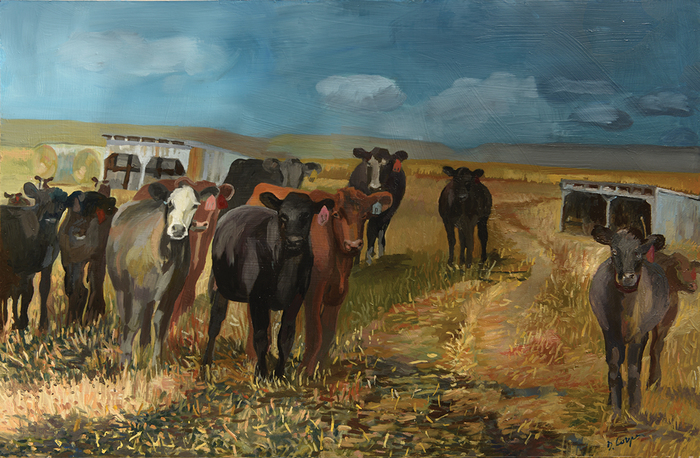Cattle Grazing in the Flint Hills

First, it was bison. Then it was cattle. Large grazing mammals have been a fixture of the lush grasslands of the Flint Hills for time immemorial.
When the Santa Fe Trail opened in 1821 cowboys herding cattle from Independence, Missouri knew that high-quality grass could be found near Council Grove – as well as water from the Neosho River and wood (for wagon wheels) from a nearby growth of hardwood trees. Word got out – when the tallgrasses are putting out new growth in the spring, their high protein content made for excellent cattle grazing.
In 1857, a steer purchased for $4 in Texas could get you $40 in Boston; that’s a worthwhile investment! The rich green growth in the spring not only provides plenty of protein but also is a great source of calcium, an element that helps build bone density that is leached from the surrounding limestone. Cattle that eat Flint Hills grass can gain upwards to 3 lbs. a day in April through July by building not only muscle but also strong, dense bones.
Whereas most of the original 170 million acres of tallgrass prairie has been coverted into farmland, approximately 4% of the remaining tallgrass prairie remains, with most of it here in the Flint Hills. The soil is shallow and rocky, thus not able to be plowed and where there was never a plow is where the grasses remain. If you’re a landowner with a need to pay the bills, the best way to make a living in the Flint Hills is by grazing cattle. There’s a 100 – 120 day window when cattle can graze the young grasses and rapidly put on weight. After that, the grasses start to put their energy towards their roots and turn golden brown. The cattle’s time on the prairie is now over and they’re often shipped out to feedlots in western Nebraska or Kansas – where they can dream of their time on greener pastures.
